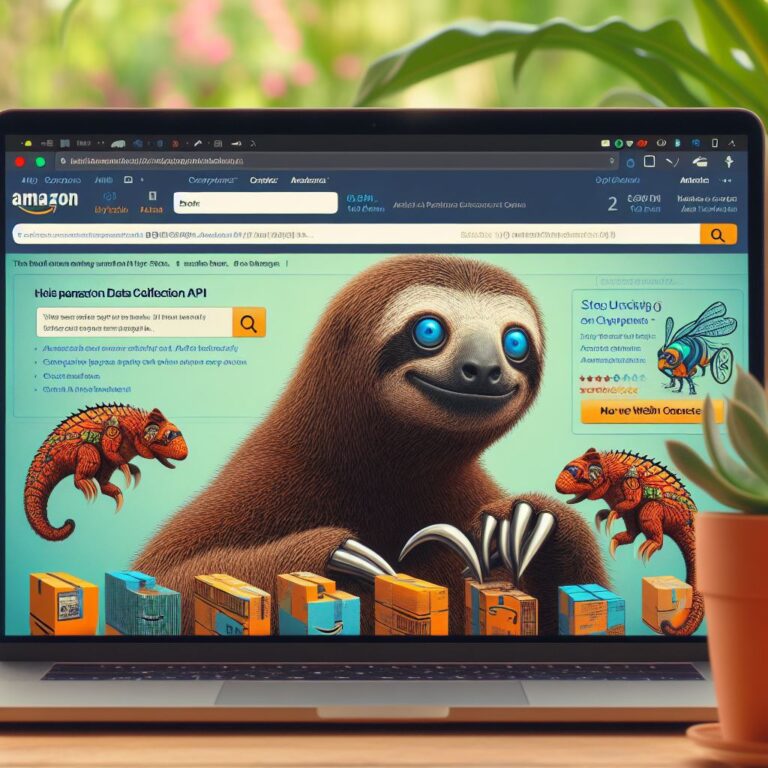Amazon is one of the largest e-commerce platforms globally, with vast amounts of data including products, users, reviews, advertisements, and more. For e-commerce operators, effectively collecting and analyzing Amazon’s data is crucial for enhancing competitiveness and optimizing strategies. However, accessing Amazon’s data is not easy due to its complex web structure and strict anti-scraping mechanisms. Traditional data collection methods often encounter various obstacles and difficulties, such as IP blocking, captchas, page rendering, regional differences, and more. So, is there a simple and efficient way to scrape data from any Amazon page with just one click? The answer is yes, and that’s where Pangolin Scrape API comes in.
What is Pangolin Scrape API?
Pangolin Scrape API is a professional web data scraping service that allows you to quickly collect data from any Amazon page without writing any code. Simply provide a URL and a callback address, and Pangolin Scrape API asynchronously retrieves the page data in JSON or HTML format. With advanced distributed networks and intelligent algorithms, Pangolin Scrape API effectively bypasses Amazon’s anti-scraping strategies, ensuring high-quality and high-speed data scraping. Pangolin Scrape API also supports collecting region-specific data from Amazon based on specified zip codes, such as prices, inventory, promotions, providing a more accurate reflection of Amazon’s consumer experience and market conditions.
Advantages of Pangolin Scrape API
Pangolin Scrape API offers several advantages that make it the best choice for scraping Amazon data:
- Easy to use: You don’t need to write any code or manage proxies or infrastructure. Just provide a URL and a callback address to effortlessly collect data from any Amazon page.
- Efficient and stable: Pangolin Scrape API utilizes distributed networks and intelligent algorithms to handle large-scale concurrent requests. It can process billions of pages per month with near-instantaneous response times and a success rate close to 100%.
- Flexible customization: Pangolin Scrape API supports various search parameters, allowing you to customize the data you want to collect based on your specific needs. You can choose to receive the data in JSON or HTML format and collect region-specific data from Amazon using zip codes.
- Secure and reliable: Pangolin Scrape API uses automatically rotating IPs and provides captcha-solving solutions to effectively avoid the risks of IP blocking or request rejection. It also utilizes HTTPS encryption to ensure the security and privacy of your data.
How to Use Pangolin Scrape API
Using Pangolin Scrape API is a straightforward process that involves three steps:
- Register and obtain a token: Visit the official website of Pangolin Scrape API, register an account, and obtain a token for authentication and authorization purposes.
- Send a request: Use the POST method to send a request to the URL of Pangolin Scrape API. The request parameters should include the token, URL, callback address, and optional business context. The request format is as follows:
JSON
{
“url”: “https://www.amazon.com/s?k=baby“, // URL of the Amazon page to be crawled
“callbackUrl”: “http://xxx/xxx“, // The service address for developers to receive data (after successful crawling, the page data will be pushed to this address)
“bizContext”: {
“zipcode”: “90001” // Amazon postal code (optional), the example is a postal code in Los Angeles, USA
}
}
- Receive the data: Once Pangolin Scrape API successfully collects the data from the page, it will push the data to the callback address provided by you via an HTTP request. The data can be in JSON or HTML format, and you can parse and process it according to your needs. The data format is as follows:
JSON
{
“url”: “https://www.amazon.com/s?k=baby“, // URL of the Amazon page to be crawled
“callbackUrl”: “http://xxx/xxx“, // The service address for developers to receive data (after successful crawling, the page data will be pushed to this address)
“bizContext”: {
“zipcode”: “90001” // Amazon postal code (optional), the example is a postal code in Los Angeles, USA
}
}
That’s it! These are the simple steps to use Pangolin Scrape API. If you want to learn more details and examples, please refer to the documentation of Pangolin Scrape API. To experience the powerful features of Pangolin Scrape API immediately, visit the official website and apply for a free trial.




